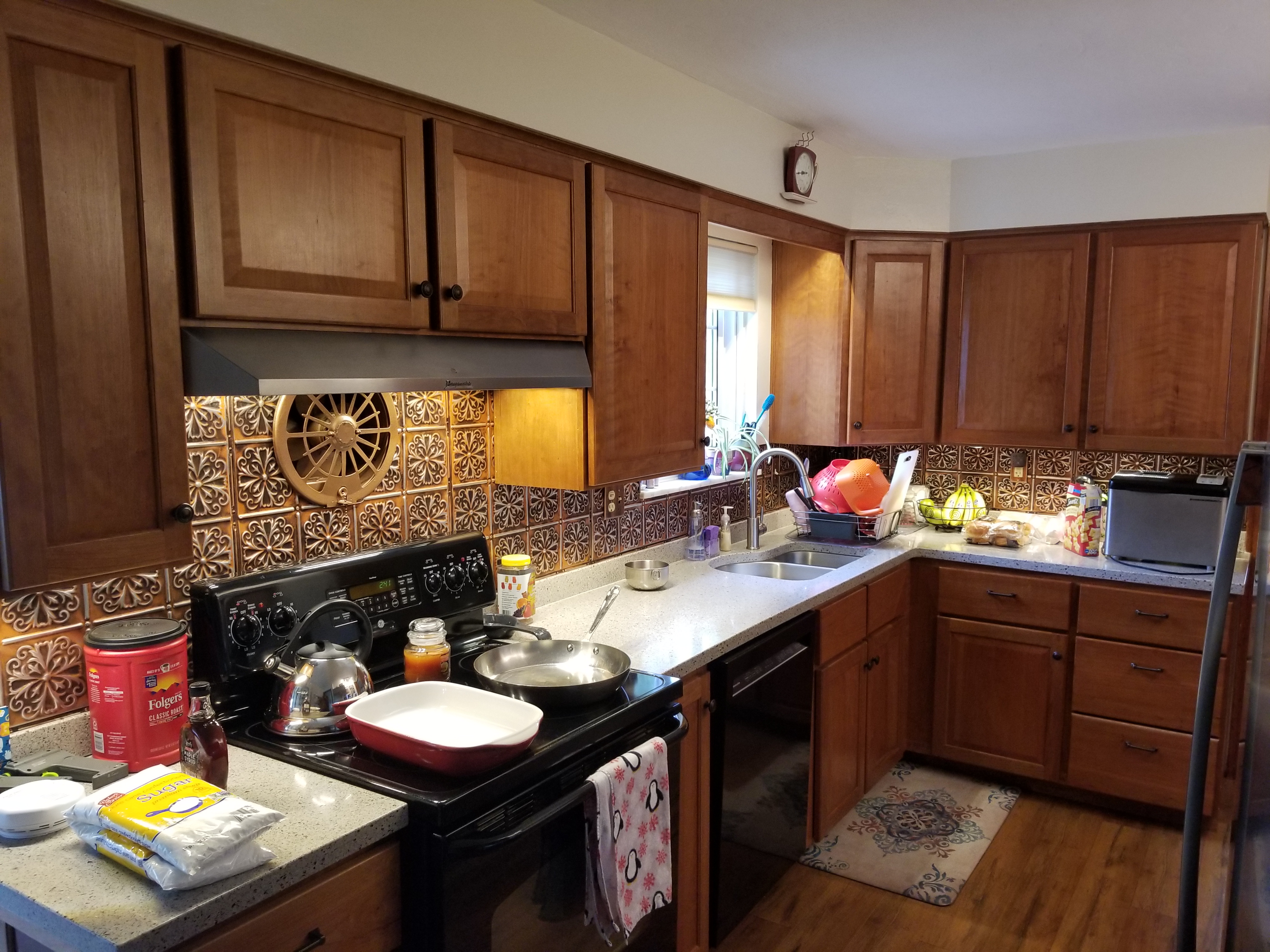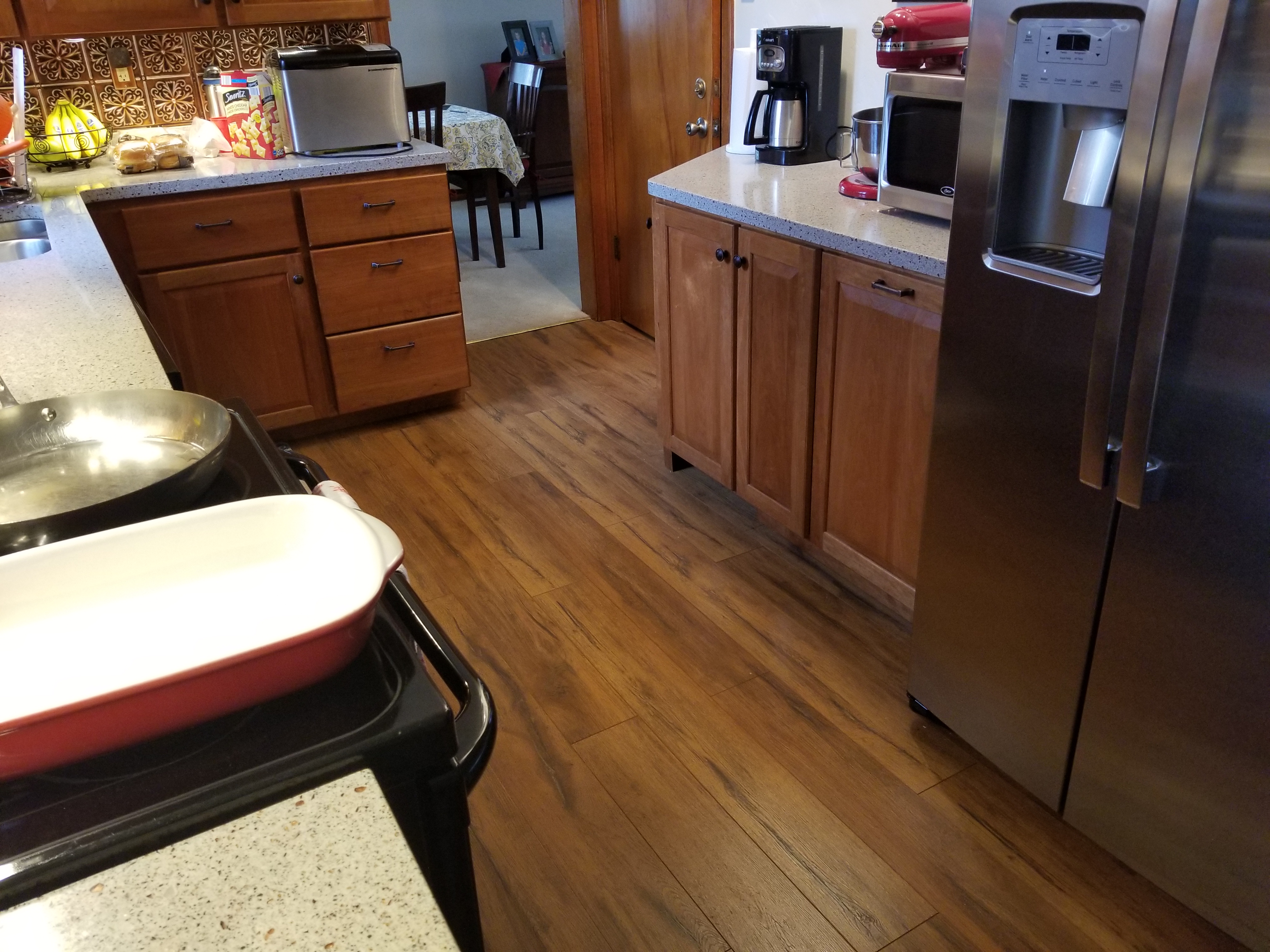Fatman mentioning the mrs. in another thread reminds me of something I did over the last couple of years.
I made the cabinets for my kitchen and redid it. Cherry (it grows here - everywhere). the cabinets are sort of how I would do them, but if I did them again, I'd do them entirely by hand. The top corner cabinet and the right side cabinet fitted to the wall (there's an outlet under it for the forced air heat and A/C) are actually made without the use of power tools, with the exception of one door.
No stain, etc.
The kitchen has darkened just a little over 2 years (direct light on the lower right cabinet makes it look faded, but it's the same - just opposite a window).
It took me a couple of years off and on to make all of the stuff, and then a week with the mrs. away to get the old kitchen out and everything in and plumbed. A sunday a month later then to do the tin (it's tin, not stick on fake tin)
The mrs. isn't a real fan of the kitchen, but this is one I did my way to my taste.
One of the mrs' friends already let me know the countertops are too shallow, but we'll live (I fabricated them).
https://imgur.com/gallery/TCZajJ7
The mrs would be pineappled if she saw that I posted this because the counters have junk out for lunch. Compared to my shop, they're pristine.


There's a side benefit to diverting the vent under the cabinet on the right. The heat comes out at the floor and doesn't impede anything, but more importantly, the cabinet is a dry food cabinet in the middle and it stays about 100 degrees F in the center cabinet where we keep cereals. They never get stale.
I made the cabinets for my kitchen and redid it. Cherry (it grows here - everywhere). the cabinets are sort of how I would do them, but if I did them again, I'd do them entirely by hand. The top corner cabinet and the right side cabinet fitted to the wall (there's an outlet under it for the forced air heat and A/C) are actually made without the use of power tools, with the exception of one door.
No stain, etc.
The kitchen has darkened just a little over 2 years (direct light on the lower right cabinet makes it look faded, but it's the same - just opposite a window).
It took me a couple of years off and on to make all of the stuff, and then a week with the mrs. away to get the old kitchen out and everything in and plumbed. A sunday a month later then to do the tin (it's tin, not stick on fake tin)
The mrs. isn't a real fan of the kitchen, but this is one I did my way to my taste.
One of the mrs' friends already let me know the countertops are too shallow, but we'll live (I fabricated them).
https://imgur.com/gallery/TCZajJ7
The mrs would be pineappled if she saw that I posted this because the counters have junk out for lunch. Compared to my shop, they're pristine.


There's a side benefit to diverting the vent under the cabinet on the right. The heat comes out at the floor and doesn't impede anything, but more importantly, the cabinet is a dry food cabinet in the middle and it stays about 100 degrees F in the center cabinet where we keep cereals. They never get stale.
































